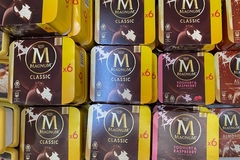
- Industry news
Industry news
- Category news
Category news
- Reports
- Key trends
- Multimedia
- Journal
- Events
- Suppliers
- Home
- Industry news
Industry news
- Category news
Category news
- Reports
- Key trends
- Multimedia
- Events
- Suppliers
Digitized flavors: Swiss start-up seeks to elevate efficiencies and uniformity in flavor profiling
The concept from iSense underscores an industry-wide need for uniformity in taste mapping

19 Jul 2019 --- Operating in Zurich, Switzerland, iSense is a solutions innovator addressing an overt lack of uniformity in flavor mapping with its standardized method of “digitizing” taste profiles of flavors in tasting solutions. The company’s services integrate standardized sensory data generated through panel assessments, which offer innovators a simplified approach to understanding and categorizing taste characteristics. FoodIngredientsFirst caught up with the company’s founder and CEO Mathieu Aste for a deeper look into the “digitalization of flavor.”
 Mathieu Aste, Founder and CEO of iSense.The concept behind iSense underscores an industry-wide need for uniformity in taste mapping. Different flavor houses are using various flavor “languages” that blur the interpretation of sensory data and do not allow for comparability and transparency, notes Aste.
Mathieu Aste, Founder and CEO of iSense.The concept behind iSense underscores an industry-wide need for uniformity in taste mapping. Different flavor houses are using various flavor “languages” that blur the interpretation of sensory data and do not allow for comparability and transparency, notes Aste.

Flavors, as Aste explains, are “black boxes.” In this context, food and beverage innovators are bound to the expertise of flavor houses in the process of selecting flavors. “Flavor houses sell relationship and artistry,” he adds. “The model is old, slow and profitable, but can be disrupted with flavor sensory data and digital tools. We can make it more efficient, delivering speed and productivity. ”
The process for digitizing a flavor profile begins once a flavor manufacturer places an order with iSense and submits its samples for assessment (30ml or 30g, compliant with EU regulation). Trained iSense panels then deliver an objective measurement of the flavor in the form of a sensory profile, which is outlined in a unique visual graph.
The company currently holds a database of more than 300 flavors, which will be digitized and published before the end of 2019. “We have the ambition of cataloging 500 varieties of strawberry and vanilla flavors on the iSense marketplace by 2021,” says Aste. “ butter, milk, cream, citrus, chicken and beef will follow.”
The lack of sensory data in the flavor industry has three main drawbacks, as outlined by Aste:
- Food and beverage makers are dependent on flavor houses to choose flavors.
- The flavor model is largely based on science, relationships and artistry. The “science” aspect, however, is less and less relevant in flavor mapping, and there is not as much chemistry-related innovation.
- Commercial reach, marketing and access to natural raw materials are the remaining differentiators.
“The flavor industry is conservative and continues to thrive based on a century-old business model,” says Aste. “Finding Directors, GMs and CEOs of successful companies who are willing to look out for a different future, embracing digital and enabling superior value for their food and beverage customers is truly inspiring.”
“Our partners trust iSense to differentiate their offerings and to increase their market share, but also to expand their geographical reach. The flavor industry is ready to transition to digital – the market needs it and the first flavor houses embracing the change will thrive. Exciting times are ahead,” he adds.
Facilitating an industry-wide level playing field An iSense digitized flavor profile.
An iSense digitized flavor profile.
While iSense’s sensory data brings comparability and discrimination between flavors, its digital tools generate productivity, commercial reach and accelerate innovation, Aste notes. In addition to offering a comprehensive database of standardized flavor profiles, iSense is a B2B marketplace that directly connects food and beverage makers with flavor houses. This area of service enables users to search for, benchmark and promote extensive flavor collections uploaded to the database by other companies.
Within the iSense marketplace, anonymity is key to promoting a level playing field for small and big players in the flavor industry. Flavor houses are not granted access to the marketplace and can only publish flavors. Conversely, food and beverage companies can access and search the marketplace and cannot publish flavors. Food and beverage companies scanning the marketplace are not aware of the identity of a supplier of any given flavor. If a company likes a specific product, they can order the sample and commit to delivering feedback to the FH after evaluation of the flavor. iSense only connects both parties once these steps are complete.
 Optimizing your flavor collection.Aste is keen to point out that while the flavor market may appear niche when compared to other ingredients, it still holds significant prominence. “Flavors represent a fraction of the cost of a food product, but they control around 60 percent of consumer preference,” he emphasizes. “It is a cumbersome and lengthy process to screen and choose flavors. Our mission is to accelerate flavor screening to a matter of minutes, instead of weeks.”
Optimizing your flavor collection.Aste is keen to point out that while the flavor market may appear niche when compared to other ingredients, it still holds significant prominence. “Flavors represent a fraction of the cost of a food product, but they control around 60 percent of consumer preference,” he emphasizes. “It is a cumbersome and lengthy process to screen and choose flavors. Our mission is to accelerate flavor screening to a matter of minutes, instead of weeks.”
iSense currently oversees a database of flavor samples submitted by 17 global brands. The company projects to have 100 flavor houses and taste ingredient suppliers on iSense, and to have 10,000 F&B users registered within the marketplace by the end of 2021.
“Digitization of flavor taste is the next frontier. The F&B makers are tired of buying black boxes and completely rely on flavor house for flavor choice. They need speed and productivity that the current flavor business model can’t deliver. Transparency, sensory data and digital are the alternative to current flavor industry consolidation and backward integration. It will deliver on key F&B industry needs. It will promote local value creation and inclusive growth,” concludes Aste.
By Benjamin Ferrer










